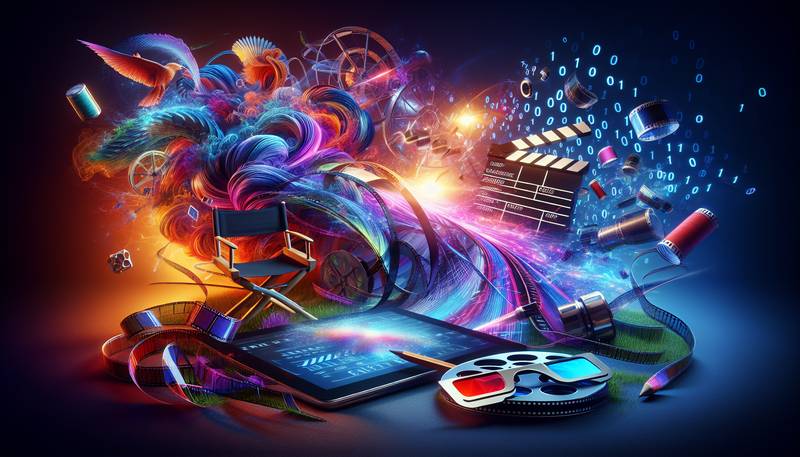Tech in Filmmaking: How Digital is Shaping the Movies

The digital revolution has transformed the world of filmmaking, impacting every aspect from production to distribution. With the advent of digital cameras, editing software, and special effects, the movie industry has undergone a complete transformation. This article will explore the ways in which digital technology has influenced filmmaking and how it continues to shape the movies we watch today.
The Digital Camera Revolution
One of the most significant changes in filmmaking has been the switch from film to digital cameras. Digital cameras offer filmmakers several advantages, including lower costs, greater flexibility, and the ability to shoot in low light conditions. Digital cameras have also made it possible for filmmakers to capture high-quality images without the need for expensive film stock.
With the rise of digital cameras, filmmakers can now shoot and edit their movies on a computer, which has made the filmmaking process more accessible to a wider range of people. This has led to a democratization of the industry, with more independent filmmakers able to produce high-quality content without the need for a large budget.
Editing and Post-Production
Digital technology has also revolutionized the editing and post-production process. Editing software such as Adobe Premiere Pro and Final Cut Pro has made it possible for filmmakers to edit their movies with ease. These programs allow for non-linear editing, which means that filmmakers can rearrange scenes and make changes to their movie without having to physically cut and splice film.
Digital technology has also made it possible for filmmakers to add special effects to their movies with relative ease. Programs like After Effects and Maya enable filmmakers to create realistic visual effects that were once only possible with a large budget and a team of experts.
The Impact on Distribution
Digital technology has not only changed the way movies are made but also how they are distributed. With the rise of streaming services like Netflix and Amazon Prime, movies can now be distributed directly to audiences without the need for a traditional theatrical release. This has opened up new opportunities for filmmakers to reach a wider audience and has changed the way we consume movies.
Furthermore, digital technology has made it possible for filmmakers to distribute their movies online, which has led to the rise of digital platforms like YouTube and Vimeo. These platforms have given filmmakers a new way to showcase their work and reach an audience that may not have access to traditional distribution channels.
The Future of Filmmaking
The digital revolution shows no signs of slowing down, and the future of filmmaking is set to be shaped by new technological advancements. Virtual reality and augmented reality are two areas that are set to have a significant impact on the industry. These technologies offer filmmakers new ways to tell stories and create immersive experiences for audiences.
Artificial intelligence is also set to play a role in the future of filmmaking. AI can be used to analyze data and predict audience preferences, which could help filmmakers make more informed decisions about what movies to produce. AI can also be used to create more realistic visual effects, making it possible for filmmakers to create even more impressive movies.
Conclusion
The digital revolution has transformed the world of filmmaking, making it more accessible and affordable than ever before. With the rise of digital cameras, editing software, and special effects, filmmakers have the tools they need to create high-quality content without the need for a large budget. Digital technology has also changed the way movies are distributed, allowing filmmakers to reach a wider audience through digital platforms. As technology continues to advance, the future of filmmaking looks bright, with new possibilities for storytelling and audience engagement on the horizon.


